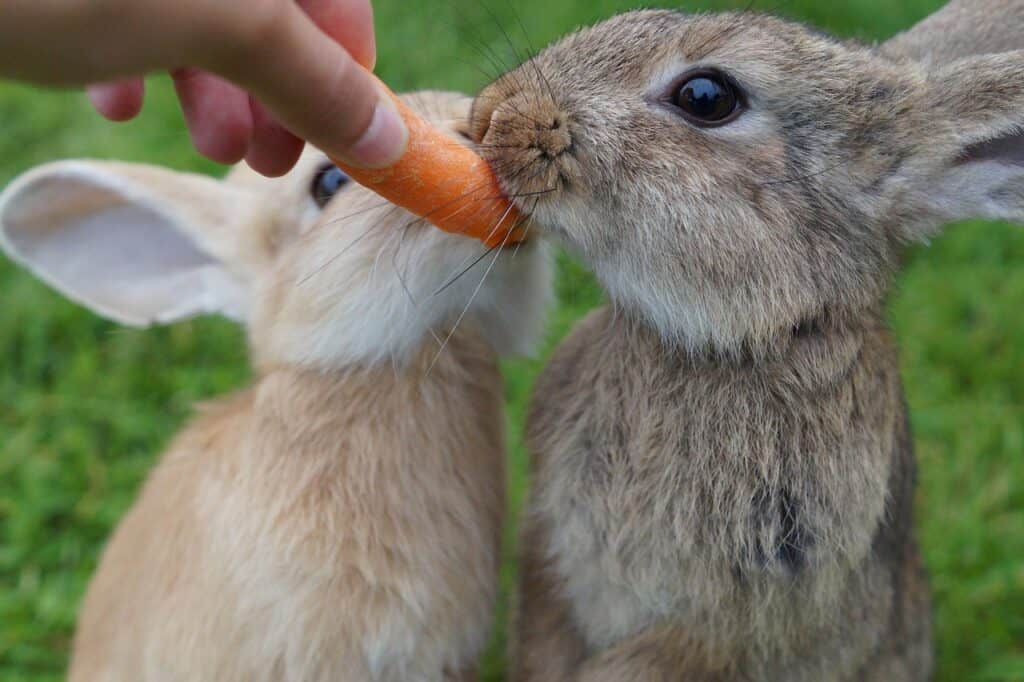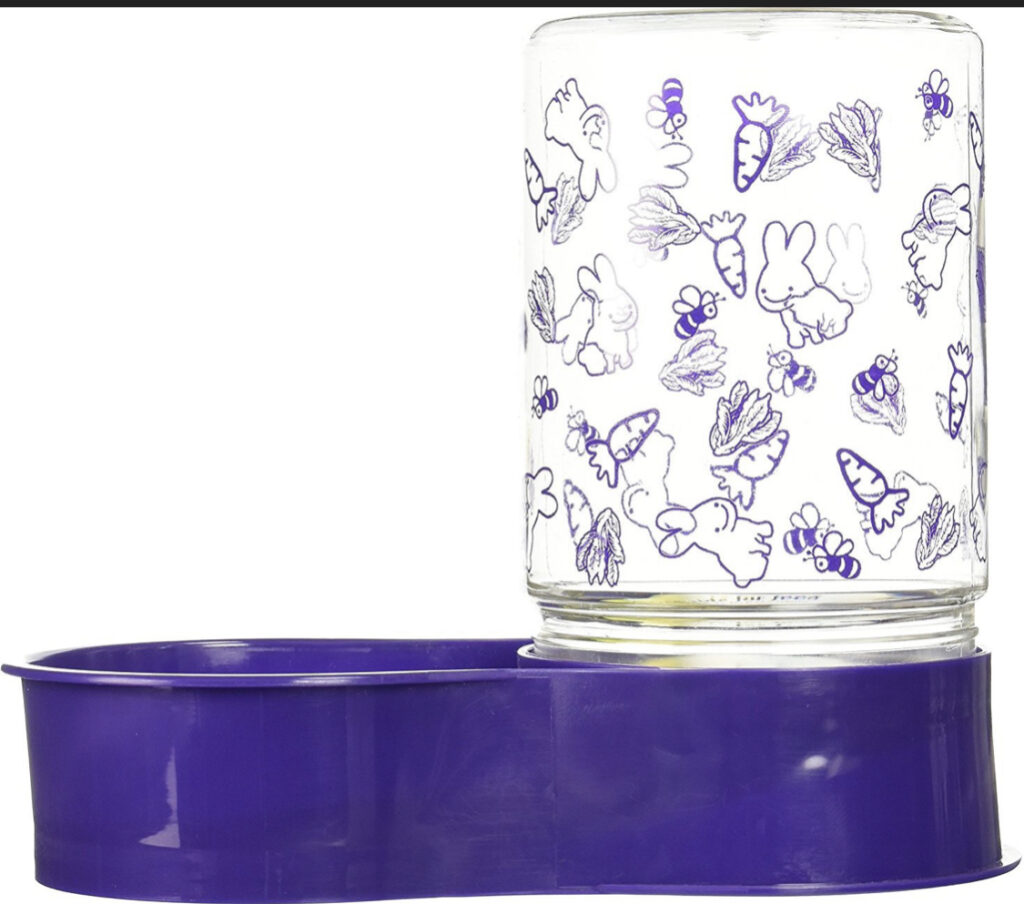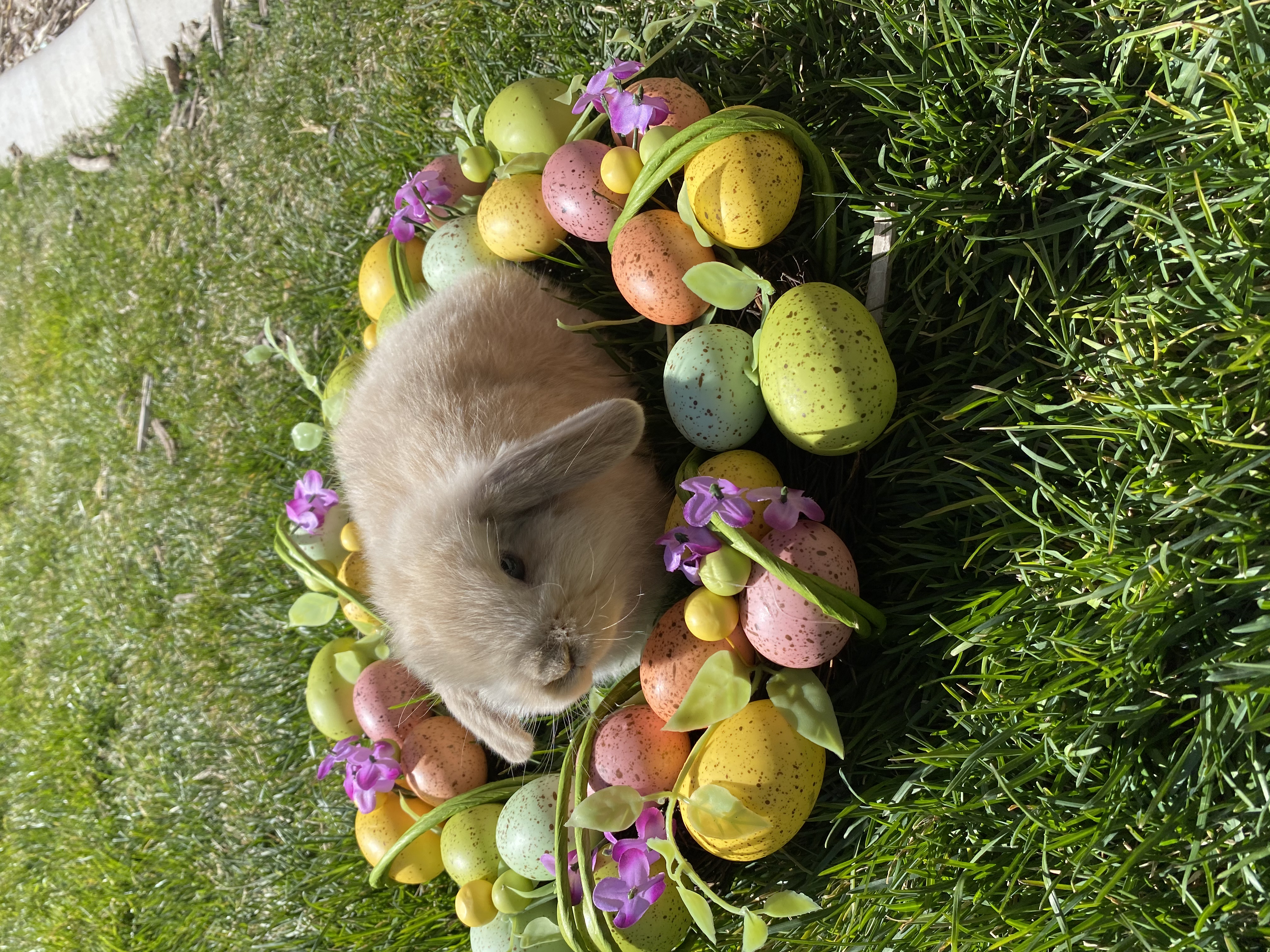The Beginners Guide on How to Feed Your Bunny
We have 8 beautiful Holland Lops! 4 boys and 4 girls. They are the sweetest most precious pets ever! They each have their own personality and they all love to snuggle us. We love them so much and they deserve the very best!
What is the best foods for your fir baby???
- Well we will brake it up into sections Brand New Babies, Toddlers, Adults (this is all with in the first 6 months) then we will touch on what to do if they stop eating or drinking or both.
- At the very bottom of this page you will find a detailed list of foods you can and can not feed you fir baby (all food listed should wait until 4 months to begin introducing)
- okay let get to it, we will cover everything below 🙂
The New Born Baby Bunny
Like all mammals rabbit’s initial diet is their mother’s milk, (If you have a mother who does not want to feed her babies you will have to help her) (which we will cover in a future article) which they’ll continue to drink until 6-8 weeks old. They first start nibbling on solids (usually hay from around the nest) between 2-3 weeks and by 3-4 they’ll be eating the same foods as their mom (plus milk). If you are selling your babies you will want to start weaning them at 7 weeks from mothers milk. Having a Hay and water feeder is needed too cause mom still needs her food as well. Our favorite water holder is this one. We have used many water holders and this is definitely our favorite! Easy to fill and NO leaking.
Toddler Bunnies
As bunnies are weaning between 6-8 weeks their digestive system is adjusting from milk to adult solids, which is a particularly sensitive time and why rabbits should stay with their mother for a minimum of 7 weeks. Never buy a baby younger than 8 weeks.
One of the key points in feeding any young bunny is consistency. Baby’s digestive systems are much more sensitive to changes in food and they are more susceptible to digestive related problems and can go downhill more quickly if they do get sick. I HIGHLY HIGHLY recommend the Sherwood Bunny Food! to be clear I DO NOT sale this food! But its wonderful!!!!!! its the very best for their sweet tummy. Click on the pic or the words that are highlighted and it will take you right to it. Truly the most amazing baby food!

When you get a bunny you should ask exactly what food your baby has been eating and make sure you get a supply of the same brand food to start you off. Then start adding in a bit of the sherwood a little bit at a time until they are only eating the sherwood baby food. You don’t want to switch right over because that’s to hard on their tummy. Your breeder should also provide you with a starter pack when you get your baby that includes their current food.
Don’t be tempted by muesli-based pellets. These will be tastier, as they contain nuts and seeds. A baby rabbit will pick out the nutrient-deficient fun ingredients, and ignore the rest. For our pellets we use this handy dandy holder. We have tried several and this one is our favorite. You can get it at amazon.
If you don’t know what your bunny was eating before you getting it or you can’t get hold of a supply then the safest option is to start with just hay and water. You can then introduce the other components to their diet gradually.
We always give our babies and endless supplies of hay, but pellets I’d stick to no more then a cup of pellets, But when there’s mom and her babies just supply them all with endless supply of the baby pellets so they are all getting some. For Hay we highly recommend Timothy Hay. We buy ours in bulk from IFA Country Stores but another awesome place to buy it is Chewy.com

If you have just your one fir baby you really shouldn’t give them endless pellets as babies and toddlers, even though they can handle it, this is actually teaching your bunny bad habits. They’ll grow accustomed to having a constant supply of pellets. If you remove this option as an adult, they’ll grow distressed. It’s better to teach a young rabbit to enjoy hay early. If you are already feeding to many pellets just start each day giving them less and less until you hit only half a cup of pellets a day by 4 months old.
SIDE NOTE…. If you don’t want you fir baby going potty all over the hay or every where else you should definitely read our how to potty train your bunny article 🙂
Adult Bunnies
- With your Adult Bunnies 4 months and up basically follow everything from the toddle bunny area, but make sure they do not more than 1/4 cup to 1/2 cup pending their weight of pellets a day, endless hay, and endless water.
- For pellets I would say the absolute healthiest will come from Sherwood BUT for those who can’t afford it ask your local animal store for their healthier kind of pellets and you can at least but sherwood supplements if you want.
Looking for a new beautiful snuggly bunny check out our available bunnies 🙂
If Your Bunny is NOT eating or drinking. Could it be Gut Stasis????
- If your fir baby is not eating or drinking this is not a good thing. It could be a very serious issue
- It’s crucial that you monitor your bunny very closely for any changes in behaviour, appetite, passage of urine or faeces. If you spot any signs of gut stasis in your rabbit you should call your vet and let them know your concerns asap.
- Gut stasis is a common, potentially life-threatening condition affecting rabbits. It’s also known as ileus, gastrointestinal stasis and GI stasis. It occurs when the normal, regular, wave-like movements of the intestines either slow down or stop altogether. Bad bacteria can then build up within the gastrointestinal tract resulting in bloating. This makes the bunny more reluctant to eat and drink which, in turn, causes their condition to worsen. Affected rabbits quickly become dehydrated and starved of essential nutrients. As the condition progresses, food or faecal material within the intestines starts to dry out becoming firm and very difficult to pass. This can lead to an obstruction.
The initial signs can be quite subtle with your pet maybe sitting quietly, being hunched up or accepting being handled when they are usually quite feisty. Conversely, if your bunny has pain in their belly they may resent being picked up, grunt or grind their teeth. Occasionally you may notice your pet having a larger belly than normal, this indicates bloating of the gastrointestinal organs.
Affected bunnies often stop eating and drinking. They may also pass stools which vary from being small, to loose and malformed and in severe cases no stools at all. Urine production can be variable depending on the degree of dehydration your pet is experiencing, but it’s typically either normal or reduced.
If your pet shows any of these signs it is an emergency and you must contact your veterinary immediately.
If it is decided that surgery is not required, typically treatment of gut stasis in rabbits would include:
- Medications to promote the movement of your bunny’s intestines
- Fluids either injected under the skin or given as a drip into a vein, usually in the ear
- Pain relief to alleviate the discomfort caused by accumulation of gas
- Nutritional support via either a feeding tube into your bunny’s stomach or by encouraging them to eat their favourite foods
Early and aggressive treatment can result in the full recovery of your rabbit. However, if an underlying cause is identified it is important that it is addressed otherwise there is a very high risk that your rabbit will develop gut stasis again.
The presence of a physical obstruction within the guts which cannot be treated medically and requires surgery carries a much poorer prognosis, however, the vet will discuss all of the options with you at the time of your appointment.
If you are sent home with a great medicine they can take to help things move in their tummy again (this is what happened to my bruno) I have the best video ever!!!! This video I will link is just awesome, it made it so easy to feed my beautiful fir baby. https://www.youtube.com/watch?v=TLVmWWFrYFY this video was such a blessing!!!!
How to Avoid Gut stasis. There are several, simple things that you can do to prevent your rabbit from suffering from gut stasis.
- Ensure your rabbit is receiving a high quality, hay based diet in order to provide them with the fibre they need for a healthy digestive system and also encourage the proper wear of their teeth, thus preventing painful spurs and overgrowths. Speak to your vet for further feeding advice.
- Take your rabbit for regular check ups at their vets so that any underlying health problems, which they may have been hiding, can be identified and treated early.
- Provide an enriched, stress free environment. Rabbits are sociable animals and like companionship, however the sudden introduction or loss of a partner can cause them great stress and upset. It is important that your bunny has sufficient space to run around without feeling threatened by their environment.
Common Questions/FAQ About Bunnies
- Question 1 How To Pick Up And Hold Your Bunny
- Question 2 How To Bond With Your Bunny Rabbit
- Question 3 How to Clip your Bunnies Nails
- Question 4 How To Potty Train A Bunny Rabbit
**The Last Thing You Need to Know about Feeding Your Fir Baby… Foods they can and can’t eat.
Vegetables: A rabbit’s favorite foods
Rabbits count vegetables and herbs among their favorite foods. Most greens found in a supermarket are safe for rabbits, with a few limitations and exceptions. (See the list of foods to avoid below.)
No more than two cups daily of fresh vegetables should be given to adult rabbits. Dwarf breeds and rabbits under five pounds should get just one cup of fresh veggies per day. A variety of two or three vegetables is ideal. Add one new vegetable at a time, and watch for signs of loose stool or diarrhea because, as mentioned above, bunnies have delicate digestive systems. Certain vegetables can be given every day, while others should be fed sparingly, one or two times a week.
Do not feed your rabbit potatoes, corn, beans, seeds or nuts. These foods are difficult for rabbits to digest and can cause serious digestive problems.
Vegetables that can be fed to a rabbit daily:
- Bell peppers
- Bok choy
- Brussels sprouts
- Carrot tops
- Cucumber
- Endive
- Escarole
- Fennel
- Herbs: basil, cilantro, dill, mint, oregano, parsley, rosemary, sage, thyme
- Lettuces: romaine, green leaf, red leaf, Boston bibb, arugula, butter
- Okra leaves
- Radicchio
- Radish tops
- Sprouts: alfalfa, radish, clover
- Watercress
- Wheatgrass
- Zucchini
Vegetables and plants to give sparingly (one or two times a week) to a bunny:
- Broccoli (stems and leaves only)
- Carrots
- Chard
- Clover
- Collard greens
- Dandelion greens (pesticide-free)
- Flowers: calendula, chamomile, daylily, dianthus, English daisy, hibiscus, honeysuckle, marigold, nasturtium, pansy, rose
- Kale
- Spinach
Fruit: Give to a bunny once or twice per week
Fruit should be given to your bunny one or two times a week. The appropriate serving is one to two tablespoons of fruit (either one kind or a mixture) per five pounds of body weight. As with vegetables, fruit should be introduced slowly and one at a time.
Fruit to feed your rabbit (one or two times a week):
- Apple (no seeds)
- Banana
- Berries: blueberries, blackberries, strawberries, raspberries, cranberries
- Cherries (no seeds)
- Grapes
- Melon
- Nectarine
- Orange
- Papaya
- Peach
- Pear
- Pineapple
- Plum
- Watermelon
Treats: Feed to a rabbit sparingly
Like lots of people, many rabbits have a sweet tooth. As with humans, treats are at the top of the food pyramid for bunnies and therefore should be fed sparingly. Healthy treats for your bunny include small pieces of fresh or freeze-dried fruit (the approved fruits listed above); natural, unprocessed mixes that include hay and dried flowers (the approved flowers listed above); and Oxbow brand rabbit treats.
Always read the ingredient list on store-bought treats because not all of them are safe for bunnies. Avoid treats that include added sugar, preservatives and artificial coloring, and never give your rabbit human treats.
Foods to avoid giving a rabbit
Some foods are not good for rabbits under any circumstances because they can make rabbits extremely sick. Here are foods to avoid giving your bunny completely:
- All human treats
- Beans
- Beet greens
- Cabbage
- Cauliflower
- Cereal
- Chocolate
- Corn or corn-cob treats
- Crackers
- Iceberg lettuce
- Legumes
- Mustard greens
- Nuts
- Pasta
- Peas
- Potatoes
- Rhubarb
- Seeds
- Sugar
- Turnip greens
- Yogurt
Well I hope this helps and you feel like you know all you need to know on feeding your precious bunny!






